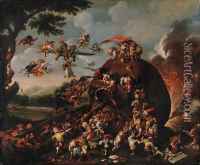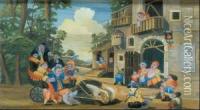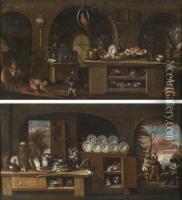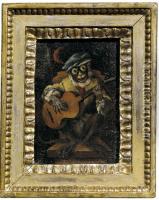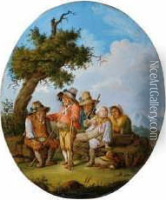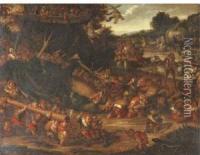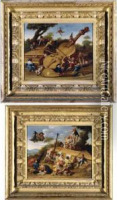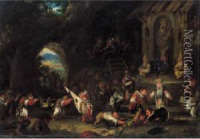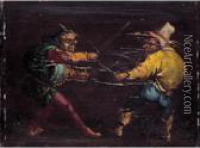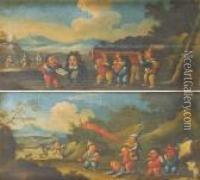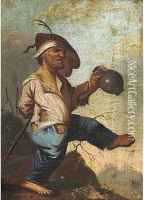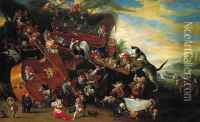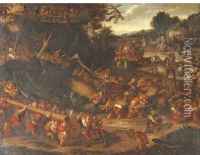Faustino Bocchi Paintings
Faustino Bocchi was an Italian painter, known for his unique subject matter of dwarfs in genre scenes. Born in 1659 in Brescia, he lived during the Baroque period and developed a highly individualistic style that set him apart from his contemporaries. His work often depicted dwarfs engaging in various activities, from the mundane to the fantastical, and he used these scenes to create allegories and humorous narratives.
Bocchi's artistic career was largely concentrated in his hometown of Brescia, where he painted for local patrons. His paintings were characterized by their meticulous detail, vibrant color palette, and the whimsical nature of the subject matter. The fascination with dwarfs in his work is thought to have possibly been inspired by the court dwarf phenomenon, which was a common practice among the nobility during the 16th and 17th centuries, where dwarfs were kept for entertainment and as symbols of luxury and power.
Despite the unusual choice of subjects, Bocchi was an accomplished artist who mastered the techniques of perspective and composition, which he employed to create dynamic and engaging scenes. His works often contained a narrative element, with each painting telling a story that the viewer could decipher. The dwarfs in his paintings were not merely caricatures but were portrayed with individual personalities and engaged in activities that ranged from playing musical instruments to participating in battles.
Bocchi's work was not widely known outside of Brescia during his lifetime, and he remains a somewhat obscure figure in art history. However, his paintings have garnered more attention in recent years for their quirky and distinctive approach to genre painting. The artist passed away in 1750, leaving behind a small but intriguing body of work that continues to be studied and appreciated for its originality and charm.
Faustino Bocchi's unique contribution to the art world is a testament to the diverse range of themes and styles that can be found in Baroque painting, and his legacy is preserved through the works that remain in collections and museums, offering insight into the artist's imaginative mind and the cultural context of his time.
